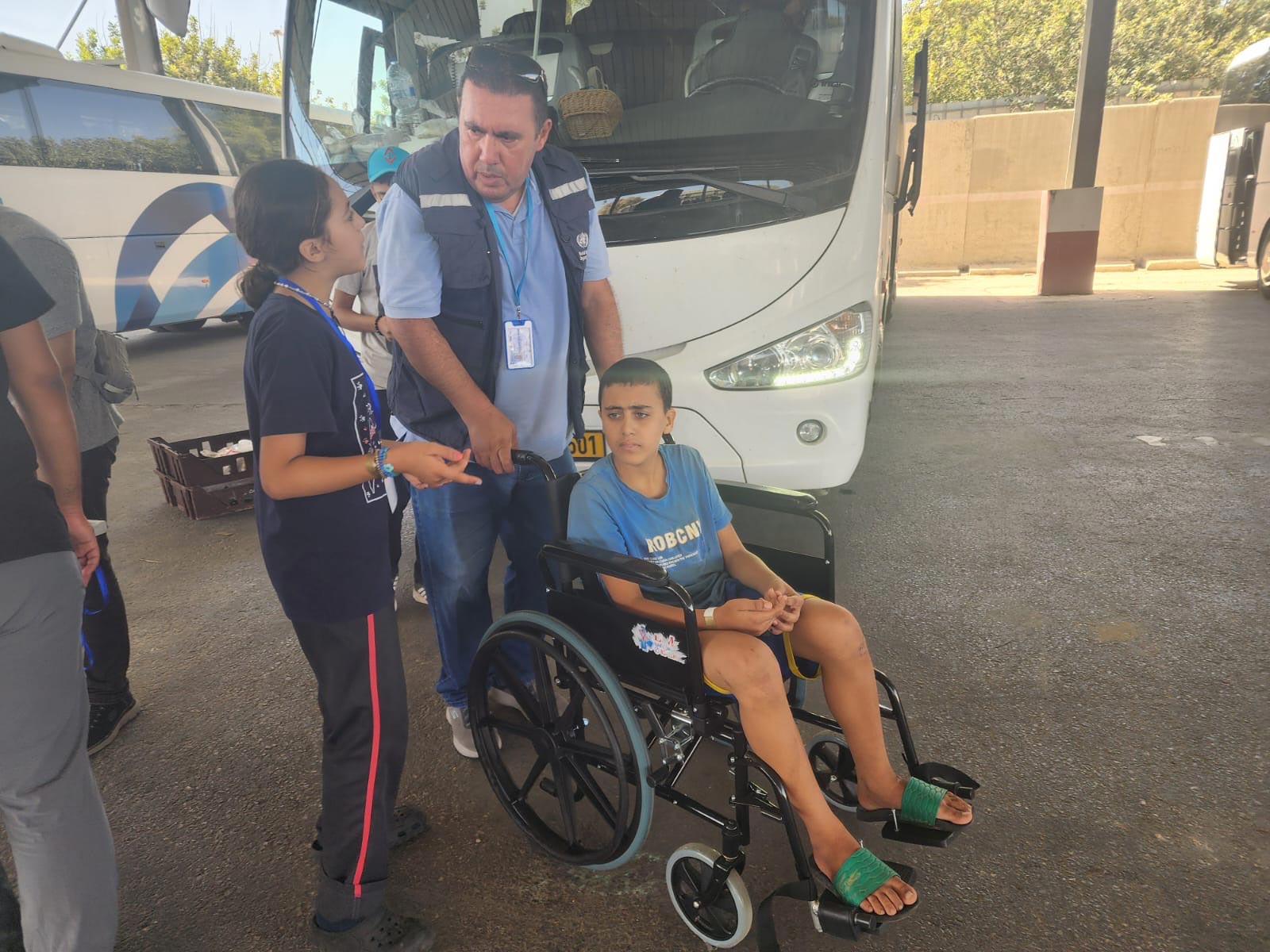
Jerusalem, Cairo, Geneva, 12 September 2024 - At least one quarter or 22 500 of those injured in Gaza by 23 July are estimated to have life-changing injuries that require rehabilitation services now and for years to come, according to a World Health Organization (WHO) analysis of the types of injuries resulting from the ongoing conflict in Gaza: Estimating Trauma Rehabilitation Needs in Gaza using Injury Data from Emergency Medical Teams.
The analysis found that severe limb injuries, estimated to be between 13 455 to 17 550, are the main driver of the need for rehabilitation. Many of those injured have more than one injury. According to the report, between 3105 and 4050 limb amputations have also occurred. Large surges in spinal cord injury, traumatic brain injury and major burn injuries all contribute to the overall number of life-changing injuries, which includes many thousands of women and children.
“The huge surge in rehabilitation needs occurs in parallel with the ongoing decimation of the health system,” said Dr Richard Peeperkorn, WHO Representative in the occupied Palestinian territory. “Patients can’t get the care they need. Acute rehabilitation services are severely disrupted and specialized care for complex injuries is not available, placing patients' lives at risk. Immediate and long-term support is urgently needed to address the enormous rehabilitation needs.”
Currently, only 17 of 36 hospitals remain partially functional in Gaza, while primary health care and community-level services are frequently suspended or rendered inaccessible due to insecurity, attacks, and repeated evacuation orders. Gaza’s only limb reconstruction and rehabilitation center, located in Nasser Medical Complex and supported by WHO, became non-functional in December 2023 due to lack of supplies and specialized health workers being forced to leave in search of safety, and was later left damaged following a raid in February 2024. Tragically, much of the rehabilitation workforce in Gaza is now displaced. Reports indicate 39 physiotherapists have been killed as of 10 May. In-patient rehabilitation and prosthetic services are no longer available and the number of people with injuries requiring assistive products far exceeds the equipment available within Gaza. Partners report that stocks of essential assistive products such as wheelchairs and crutches have run out and it is difficult to replenish supplies due to the restricted flow of aid into Gaza.
The analysis focuses solely on new injuries sustained since the escalation of hostilities in October 2023. However, tens of thousands of Palestinians in Gaza were already living with pre-existing chronic conditions and impairments before this, putting them at significant risk due to the lack of appropriate services.
The estimates in the analysis will be used by WHO and partners to plan for a surge in rehabilitation-related services and contribute to long-term health planning and policymaking.
Amidst the ongoing hostilities, it is critical to ensure access to all essential health services, including rehabilitation to prevent illness and death. WHO reiterates its call for a ceasefire, which is critical for rebuilding the health system to cope with escalating needs.


